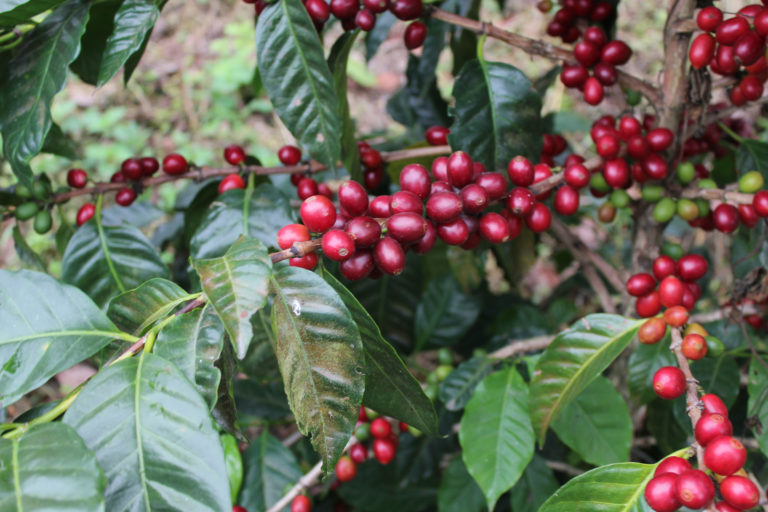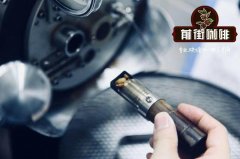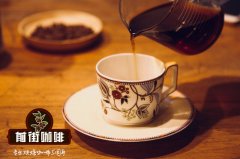Coffee machine coffee powder can be boiled several times _ can coffee be made for a second time _ how to drink coffee powder

Professional coffee knowledge exchange more coffee bean information please follow the coffee workshop (Wechat official account cafe_style)
Coffee beans can only be ground and boiled once, although it is a pity that all that is left is tar and caffeine and only brown in color. Coffee powder can not be sealed and stored in a cool and dry place for 2 or 3 days at a time, and it is also said that it can be kept for a week or so, but I personally feel that the taste will be very volatile and there is no fragrance, so it is better to grind it into powder and boil it as soon as possible.
"whatever the secret, it's easy to make a good cup of coffee. Grind the high-quality Arabica beans that have just been baked, boil the pure water to a quick boil, brew the ground coffee powder in the right proportion of two tablespoons of coffee powder to six ounces of water, extract for four or five minutes, and then pour the filtered coffee into the cup. add sugar or condensed milk to your favorite taste. It is quite satisfying to drink it up immediately after mixing it well. This is really the secret of making the perfect cup of coffee. "
-- Mark Pendraste
Left-handed coffee, right-handed world
He spoke too American, about 10 grams for two tablespoons, about 180ml for six ounces, and boiled until about 85 ℃ (note that it's pure water, we still have to bring it to a boil and cool it down to feel more at ease.) What he probably said is to press the pot to make coffee, soak it and filter it. Then the Yankee "drank it off"-- I beg to differ! We all think that good things should be sipped slowly, which can only represent what he thinks is perfect.
He also admits that there are countless details about making coffee, and real coffee fans will never finish talking about it. Indeed, what kind of coffee beans are roasted to what depth, how far to grind, what kind of cooking equipment to match, and what kind of cooking method to use? And brewing a cup of espresso is particularly fastidious, he said, "like a unique art that only Leonardo da Vinci knows, mysterious."
There is no standard for perfect coffee. The "perfect coffee" in the mind of Japanese coffee godfather Taguchi is: freshly roasted beans, freshly ground powder, and freshly brewed coffee. On the other hand, many coffee experts think that as long as you think that what you drink is a cup of mellow, distinct flavor, balanced sweet and sour coffee, and smooth taste, it is the perfect coffee.
Start with the foundation by hand.
Let's start with hand-brewed coffee, which is the most common way to brew coffee and can fully present the flavor of coffee.
Hand-brewed coffee is made from filter cups and hand pots. Coffee fans are very particular about it, there are more than ten kinds of filter cups alone, as beginners of coffee, the three most basic should be mastered. The gods said that if you use the wrong filter cup, you will ruin the rosy summer of the Panamanian Emerald Manor.
Kalita: the basic framework of hand punching
The world's first coffee filter cup was invented by German housewife Mrs. Melitta in 1908. It is a copper filter cup with a hole in the bottom. Using her son's textbook paper as filter paper, she flushed out an unprecedented cup of refreshing coffee and named the cup after herself, thus obtaining a patent and starting a business, leaving an important page in the history of coffee in the world.
Based on the Melita cup, the Japanese invented a three-hole fan-shaped filter cup, which flows more smoothly and is less likely to clog than the Melita cup. To pay homage to Mrs. Melita, she was named Kalita (Karita).
Kalita is currently used in coffee shops or families, because of its first-class stability, brewed coffee, aroma and taste can achieve the best balance.
Kono: siphon extraction
Kono is a tapered filter cup invented by Japanese Toshio Kono ("Kono" is the Japanese pronunciation of "Kono"). Compared with the fan-shaped cup, the tapered cup powder layer is more concentrated and deep, the water stays longer and absorbs water more evenly. When the coffee powder absorbs enough water, the water is added to the "ribs" on the inner wall of the Kono cup, locking the air and not going up, there will be a "siphon effect". Extract coffee with a strong sense of export (it is said that this filter cup can be used as espresso by hand).
HarioV60: press extraction
Produced by Hario (Harrio), there are spiral "ribs" on the inner wall of the cup. The unique feature of this filter cup is to increase the flow rate of the water and the path in the cup through the spiral. when the coffee powder is filled with water, the spiral ribs squeeze the coffee liquid like a towel, thus extracting the coffee with distinct flavor and outstanding aroma.
Application guide for three kinds of filter cups
Flavor
Suitable filter cup
The aroma is mainly sour and sweet
HarioV60
Sweet and sour and balanced taste
Kalita
Solid taste and end rhyme
Kono
Producing area
Suitable filter cup
Africa, Middle East
HarioV60
Asia, Pacific
Kalita
America: Guatemala
HarioV60
Costa Rica
HarioV60/Kono
Colombia
HarioV60/Kono
Mexico
Kono
Panama
HarioV60/Kono
The Caribbean region
Kalita
Treatment method
Suitable filter cup
Water washing
HarioV60
Insolation
Kono
Honey treatment
Kalita
Baking degree
Suitable filter cup
Shallow baking
HarioV60
Medium baking
Kalita
Deep baking
Kono
Any "guide" is only aimed at an average, not a "one-size-fits-all", mechanical treasure book. Each coffee has its own characteristics, and it can only be understood through careful attempt, comparison and summary. in order to find the closest way to perfect brewing.
In order to make a perfect cup of coffee, fulfill the responsibility of the foodie Initiative: to perfectly present the coffee in its most natural state, starting from mastering the use of the filter cup.
END
Important Notice :
前街咖啡 FrontStreet Coffee has moved to new addredd:
FrontStreet Coffee Address: 315,Donghua East Road,GuangZhou
Tel:020 38364473
- Prev

Which flavor of capsule coffee tastes better | is capsule coffee too bitter?
Professional coffee knowledge exchange more coffee bean information Please follow the coffee workshop (Wechat official account cafe_style) drinking coffee is not difficult now, from semi-automatic coffee machine to fully automatic coffee machine, now there are capsule coffee machine, endless emergence of coffee machine, more and more convenient production method is really a blessing to coffee lovers, today I will introduce to you
- Next

One of the necessary artifacts for baristas, smell the bottle and identify 36 flavors.
Professional coffee knowledge exchange more coffee bean information please follow the coffee workshop (Wechat official account cafe_style) is similar to the wine nose Le Nez Du Vin, coffee smell bottle is also a sharp weapon for coffee lovers to train their sense of smell. Coffee fans and baristas, coffee roasters, and Qgrader all have this on their own. The specific understanding and memory of the smell should be based on personal experience.
Related
- Beginners will see the "Coffee pull flower" guide!
- What is the difference between ice blog purified milk and ordinary milk coffee?
- Why is the Philippines the largest producer of crops in Liberia?
- For coffee extraction, should the fine powder be retained?
- How does extracted espresso fill pressed powder? How much strength does it take to press the powder?
- How to make jasmine cold extract coffee? Is the jasmine + latte good?
- Will this little toy really make the coffee taste better? How does Lily Drip affect coffee extraction?
- Will the action of slapping the filter cup also affect coffee extraction?
- What's the difference between powder-to-water ratio and powder-to-liquid ratio?
- What is the Ethiopian local species? What does it have to do with Heirloom native species?

